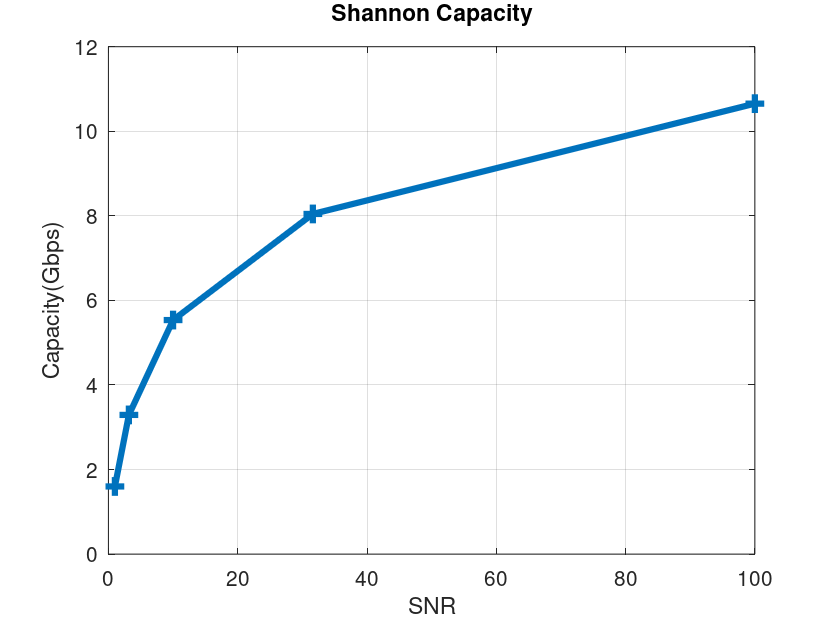Recently I came across a post from T-Mobile in which they claim to have achieved a download speed of 5.6 Gbps over a 100 MHz channel resulting in a Spectral Efficiency of more than 50 bps/Hz. This was achieved in an MU-MIMO configuration with eight connected devices having an aggregate of 16 parallel streams i.e. two parallel streams per device. The channel used for this experiment was the mid-band frequency of 2.5 GHz.
Now let us revisit the Shannon Capacity theorem and see what data rate it predicts with the above parameters. Shannon Capacity theorem is given as:
C = N x BW x log2(1+SNR)
N=16 is the number of parallel streams enabled by multiple antennas at Tx and Rx
BW=100 MHz is the total bandwidth available to the carrier in the 2.5 GHz band
SNR=10 is the Signal to Noise Ratio (a moderately good SNR is assumed)
Plugging these numbers in, we get a capacity limit of 5.54 Gbps, approximately the same number obtained in the experiment. But it all depends upon the Signal to Noise Ratio, that has not been mentioned by T-Mobile in the reference post. With an SNR=20 dB, a very good channel condition, the capacity increases to about 10.65 Gbps but with an SNR=0 dB, a likely scenario at the cell edge, the capacity drops to 1.6 Gbps. The details for the capacity at different SNRs are given in the table and figure below.


- Please note that the above capacity calculations are for eight users simultaneously connected over the 100 MHz channel. The data rate achieved by a single user, in the T-Mobile experiment, was 5600/8=700 Mbps.
- Also note that much higher bandwidths are available in the millitmeter wave band and this may increase the data rates 10 fold or even higher.
References:
https://www.t-mobile.com/news/network/t-mobile-achieves-mind-blowing-5g-speeds-with-mu-mimo
https://www.waveform.com/a/b/guides/5g-and-shannons-law
One thought on “5G Data Rates and Shannon Capacity”